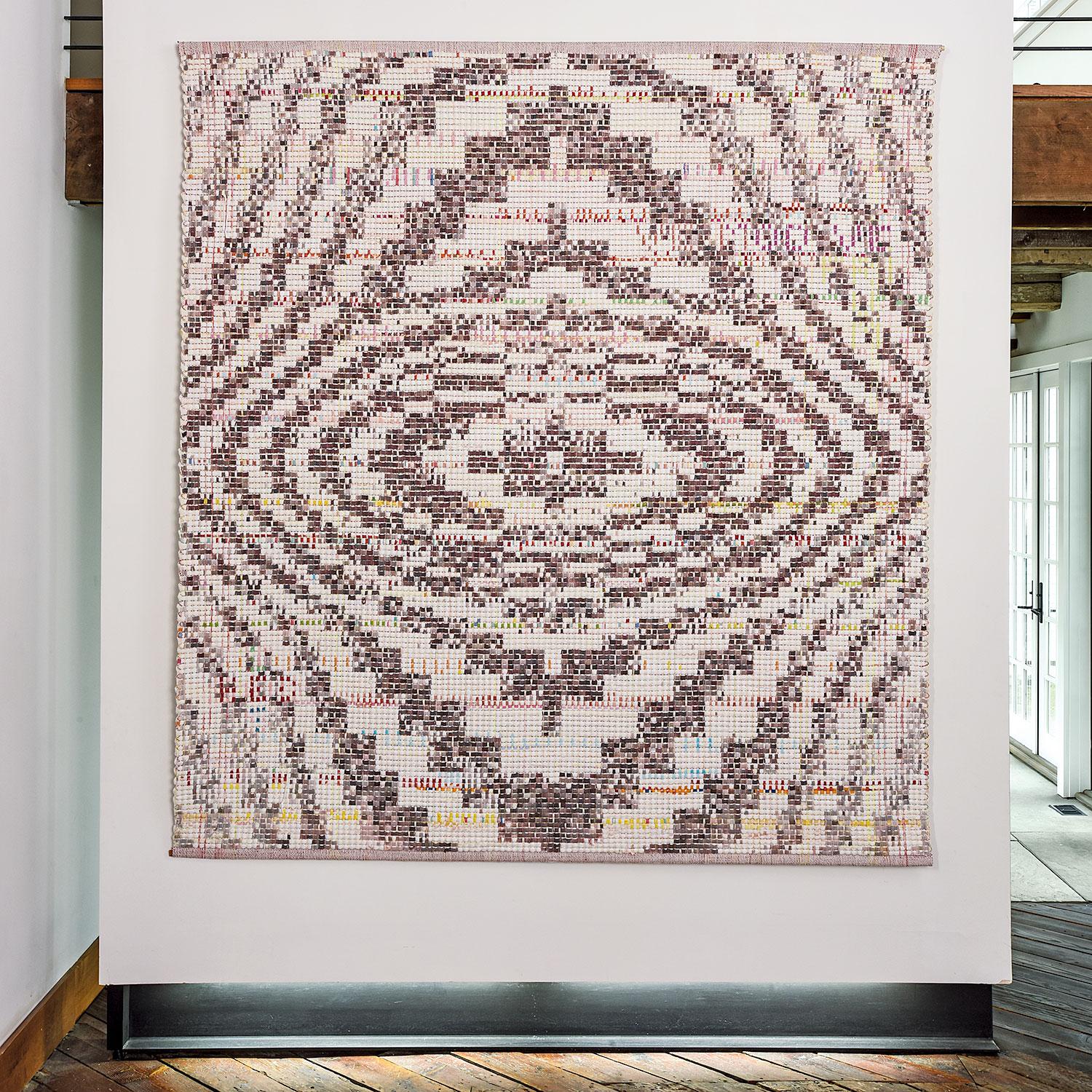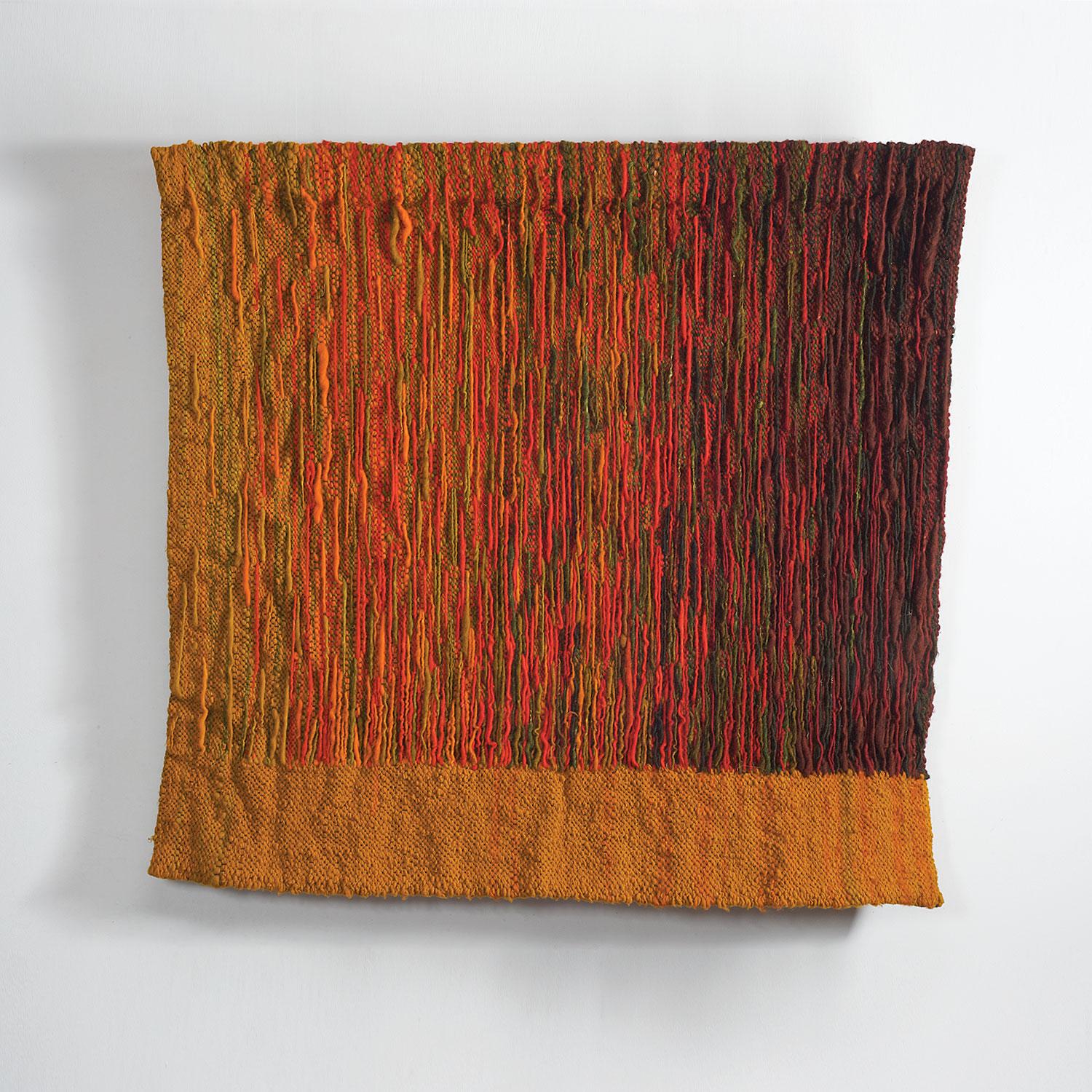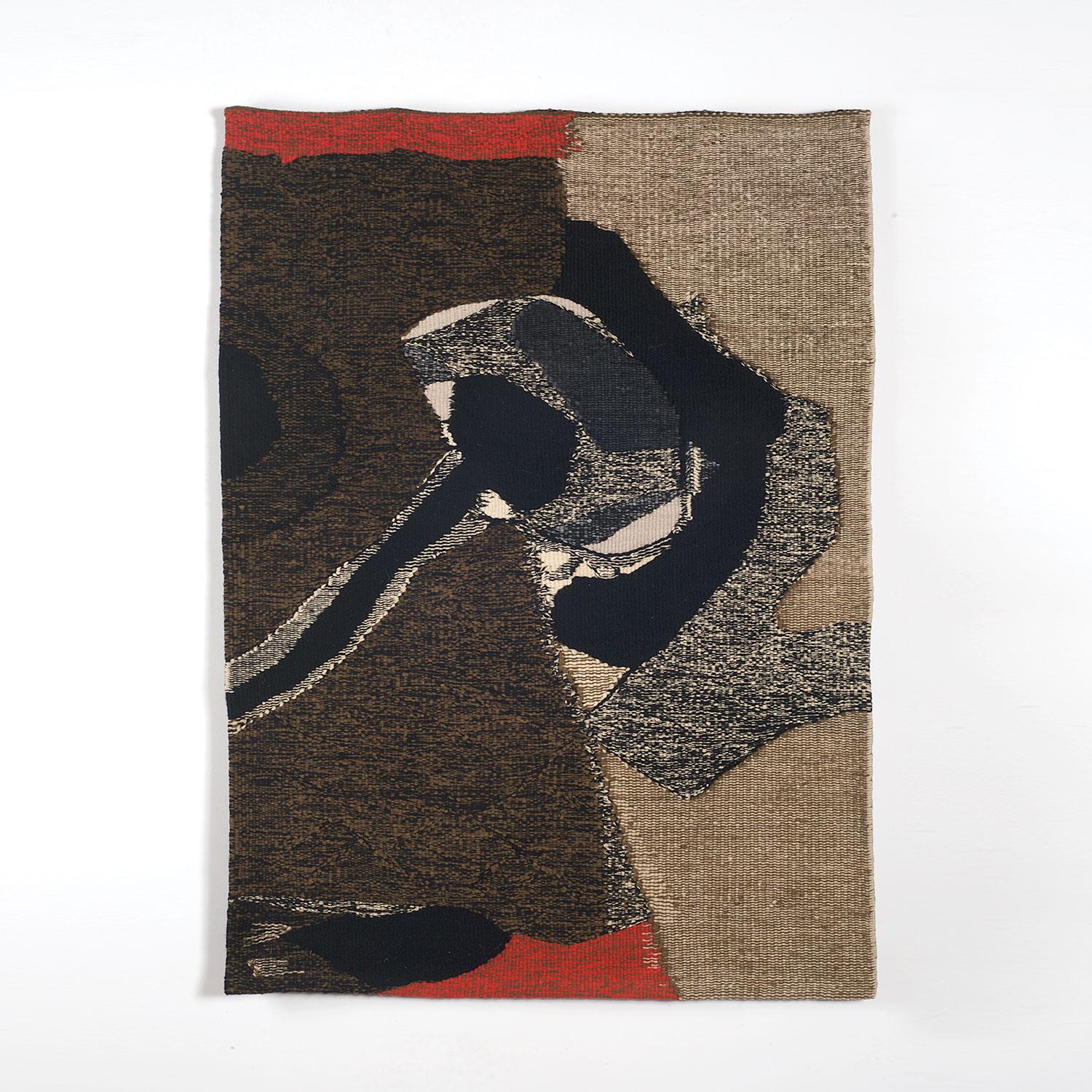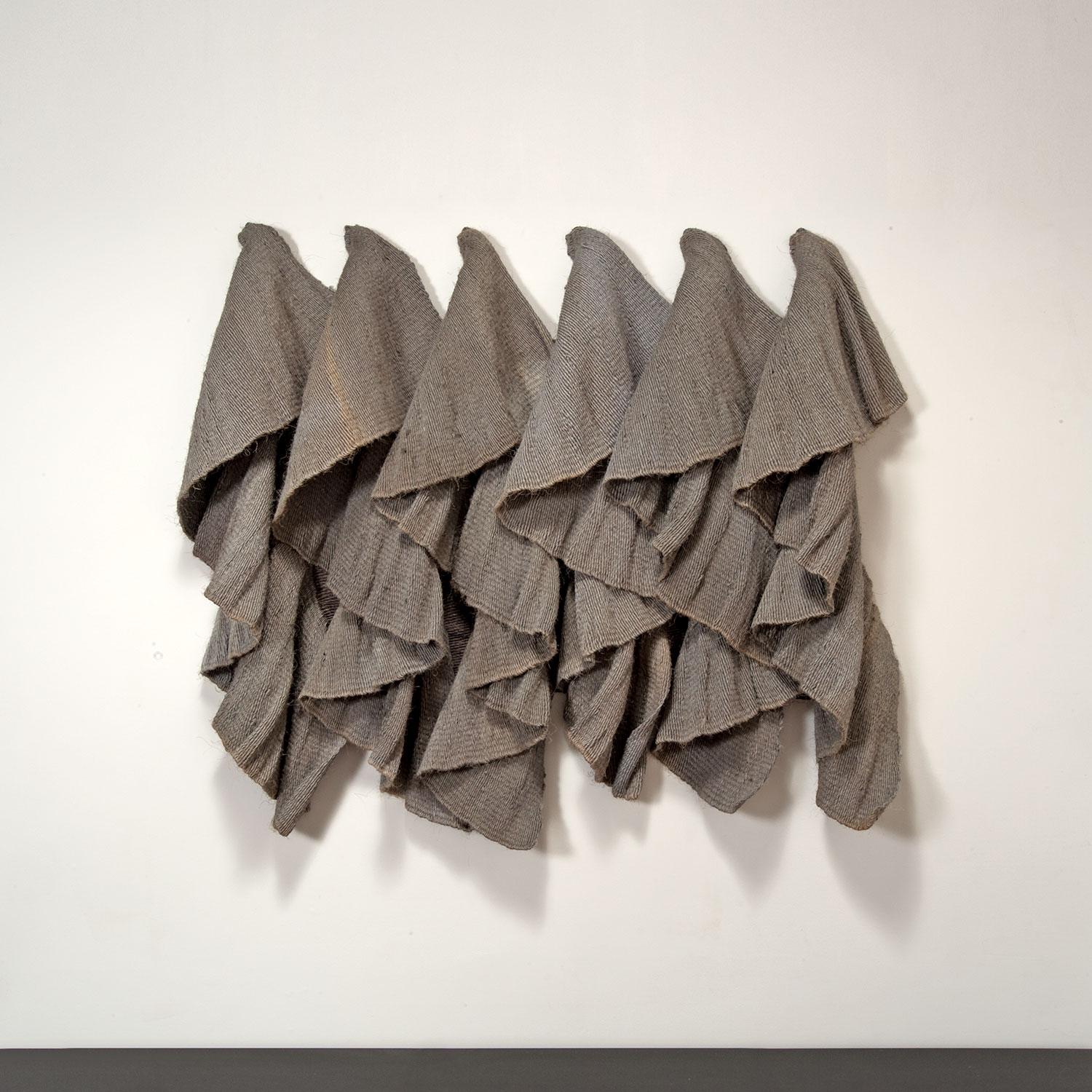Items Similar to knotted tapestry by 'De Stijl' artist Bart van der Leck (1876-1958)
Want more images or videos?
Request additional images or videos from the seller
1 of 7
Bart van der Leck knotted tapestry by 'De Stijl' artist Bart van der Leck (1876-1958)
About the Item
knotted tapestry by 'De Stijl' artist Bart van der Leck (1876-1958) with important provenance
Bart van der Leck, together with Piet Mondrian and Theo van Doesburg, is one of the founding members of the 'De Stijl' group in 1916-1917. At that time, Bart van der Leck's work had a major influence on the development of the work of Piet Mondrian and Theo van Doesburg.
This carpet comes from and is used in the Villa Schöne-van der Leck in Blaricum. The villa Schöne-van der Leck was built in 1953 after a design by Piet J. Elling in collaboration with the artist Bart van der Leck. The clients, Mr. and Mrs. O. Schöne-Van der Leck, were Bart van der Leck's son-in-law and daughter, respectively. The villa Schöne-van der Leck has exceptional art-historical value because of the collaboration between the architect Elling and 'De Stijl' artist Bart van der Leck, resulting in a total work of art according to the principles of 'De Stijl', in which the various disciplines have equal value. contributed. The property has a rarity value due to the fact that very few such total works of art have been preserved according to the principles of 'De Stijl'; as far as we know, this is the only one by Elling and Van der Leck. The entire house was decorated in 'De Stijl' visual language. Bart van der Leck made interventions in various rooms by applying color areas on walls and ceilings in the 'De Stijl' colors red, yellow and blue. Paintings, watercolors and designs by Bart van der Leck hung on the wall. Carpets designed by Bart van der Leck lay on the floor in various rooms. The offered carpet served as a bed mat for one of the boys' rooms. The carpet has therefore been used in situ by the Schöne-van der Leck family, is in reasonably good condition but clearly has some signs of wear.
Bart van der Leck (Utrecht 1876-1958 Blaricum) is a Dutch painter and designer and, together with Theo van Doesburg and Piet Mondrian, he is one of the founding members of the 'De Stijl' movement. Bart van der Leck, born in Utrecht in 1876, worked from 1891 in studios for stained glass. From 1900 to 1904 he attended classes at the National School of Applied Arts and the National Academy in Amsterdam. Toorop's example can be recognized in some symbolistic works with religious subjects. Together with his befriended architect, Klaarhamer, he illustrated the publication 'Het Hooglied van Salomo'. After 1906, he painted realistic themes, portraits and street scenes. After a trip to Paris in 1907, where he came under the influence of Egyptian art and the murals of Puvis de Chavannes, Van der Leck developed a style in which he greatly simplified the forms and sobered the colours. Important are his contacts with art educator H.P. Bremmer, who introduces him to Mrs. Kröller-Müller. From the family business Müller & Co. He receives some important orders. From 1913 he replaced oil paint and canvas with casein paint on eternit, in order to approach the effect of wall paintings as closely as possible. In Laren he became friends with Chris Beekman in 1914 and with Piet Mondriaan in 1916, a mutual influence took place. In this period the first paintings in his definitive style are created: geometric shapes in primary colors on a white background, where reality remains the starting point. In the years 1917 and 1918 he is involved in 'De Stijl' and abstract paintings without recognizable motifs are created. His use of primary colors and the division into lines and planes has a major influence on this movement. Bart van der Leck will not be involved in 'De Stijl' for long. A difference of opinion, among other things about the use of planes and diagonal lines and the functioning of painting within architecture, led to the end of his cooperation with De Stijl and a return to recognizable motifs, which he maintained in his paintings until his death. One of the largest collections of his work can be found in the Kröller-Müller museum. In the 1920s Bart van der leck also started designing patterns for fabrics and in the 1930s and 1940s he was involved in interior design and ceramics. In addition to being a painter, Van der Leck was also an applied artist. He made designs for vases, tiles, plates, posters, carpets and letters.
- Creator:Bart van der Leck (1876 - 1958)
- Dimensions:Height: 24.41 in (62 cm)Width: 41.34 in (105 cm)
- Medium:
- Movement & Style:De Stijl
- Period:
- Condition:
- Gallery Location:ZEIST, NL
- Reference Number:1stDibs: LU2614212916622

About the Seller
No Reviews Yet
Vetted Seller
These experienced sellers undergo a comprehensive evaluation by our team of in-house experts.
Established in 1999
1stDibs seller since 2023
- ShippingRetrieving quote...Ships From: ZEIST, Netherlands
- Return PolicyA return for this item may be initiated within 3 days of delivery.
More From This SellerView All
- Sunny beach scene with beach houses in Trouville-sur-mer (France)Located in ZEIST, UTAs a boy, journalist and artist Sander van Walsum was captivated by Monet. That love did not fit into the spirit of the times at the time, but his...Category
2010s Impressionist Landscape Paintings
MaterialsAcrylic, Canvas
- Portrait of a Balinese beauty by Theo Meier (1908-1982)By Theo MeierLocated in ZEIST, UTAfter his academy Theo Meier moved to Germany where he came into contact with Max Liebermann and German expressionists from Die Brücke. Inspired by Paul Gauguin, he left for Tahiti at the age of 24. The influence of Paul Gauguin and the German Expressionists can be clearly seen in his works. After a year in Tahiti, he moved toBali where he found the culture and art that he had missed in Tahiti. He settled in Sanur and befriended the other artists who had settled in Bali, such as Rudolf Bonnet, Walter Spies, Antonio Blanco...Category
1940s Expressionist Figurative Paintings
MaterialsOil
You May Also Like
- Moroccan Hand-Knotted Wool Berber RugLocated in San Juan, PRca. Contemporary Hand Knotted Wool Moroccan rugs are a handmade creation, woven by the women of Berber tribes in the Atlas mountains. Each kind of berber rug is characterized by...Category
21st Century and Contemporary Tribal More Art
MaterialsWool, Textile, Tapestry
- State of Mind, Contemporary Woven Tapestry, Geometric Abstract Textile SculptureBy Ane HenriksenLocated in Wilton, CTState of Mind, Contemporary Woven Tapestry, Abstract Textile Wall Sculpture, Viscosed silk, cotton cloth, jersey dots, 102” x 95”, 2016 by textile artist, Ane Henriksen...Category
2010s Abstract Geometric Abstract Sculptures
MaterialsFabric, Textile, Tapestry, Cotton, Silk
- Refleksy (Reflexes), Mid-Century Wool Tapestry, Abstract Textile Wall SculptureLocated in Wilton, CTRefleksy (Reflexes), flax (linen) and wool, 50" x 48" x 2", 1973. This warm, vivid Mid-Century tapestry, Refleksy (1973) is by Polish textile artist, ...Category
Mid-20th Century Abstract Abstract Sculptures
MaterialsTextile, Tapestry, Wool, Linen, Thread, Fabric
- Summer and Winter, Mid-Century Tapestry, Woven Hanging, Textile Wall SculptureBy Adela AkersLocated in Wilton, CTAdela Akers (b. 1933, Santiago de Compostela, Spain) is a Spanish-born textile and fiber artist. She is Professor Emeritus (1972 to 1995) at the Tyler Scho...Category
1970s Abstract Abstract Sculptures
MaterialsTextile, Linen, Thread, Yarn, Fabric, Tapestry
- Wings, Mid-Century Abstract Woven Tapestry, Blue Textile Wall SculptureBy Jan HladikLocated in Wilton, CTWings, Mid-Century Abstract Woven Tapestry, Blue Textile Wall Sculpture, Hand dyed wool hand dyed wool, 73" x 58", (1973) by Czech textile artist, Jan Hladik...Category
Mid-20th Century Abstract Abstract Sculptures
MaterialsFabric, Textile, Tapestry, Wool, Dye
- Journey Trees IV, Sara Brennan, hand-woven textile wall sculptureBy Sara BrennanLocated in Wilton, CTJourney Trees IV, linens and swing threads, 7.5" x 8" x 1", 2021. This figurative woven textile piece is by UK-based textile artist, Sara Brennan (b. 196...Category
2010s Contemporary Figurative Sculptures
MaterialsFabric, Textile, Tapestry, Linen, Thread




